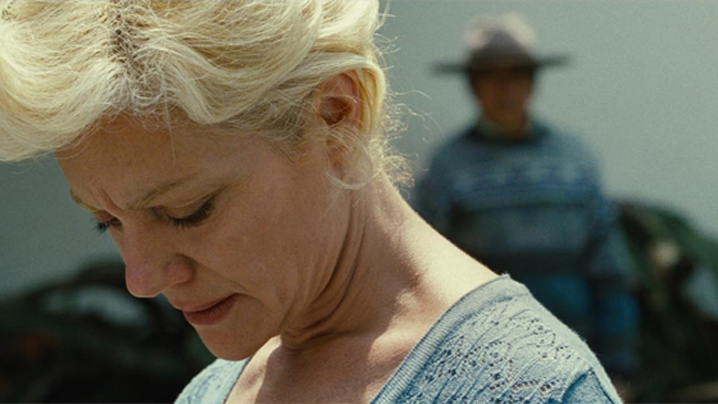Lucrecia Martel’s La mujer sin cabeza
by Travis Jeppesen on January 18, 2010
A woman driving down a dirt road runs over something. At first, she thinks it is “only” a dog (this only is always negligible; one of the points of the film), but later, after the fact, she decides in her mind that it was in fact a child. Nobody can convince her otherwise.
A woman hits something in her car and becomes free from rational existence. It is the sort of freedom she doesn’t want. She wanders through the film in an amnesiacal daze. She is surrounded by people. It is hard to tell how each character is related to her — particularly the men. Is he her brother? her lover? her husband? Is the horny teenage lesbian with hepatitis her niece or the daughter of a friend? We can’t tell because the woman doesn’t know anymore. She has lost her head. She has to dye her hair to cope with it all, to become a new person.
You can watch this film several times and still not “get” what’s going on. John Waters sums it up best in one of his quintessential one-liners, selecting La mujer sin cabeza as one of the best films of 2009 in December’s Artforum:
“Bleached hair, hit-and-run accidents, in-laws with hepatitis? Huh? I didn’t get it, but I sure did love it!”
This ambiguity is precisely what makes it worthwhile as an endeavor in narrative art. All over the Internet, people are publishing their theories of what the film means; this implies that it’s already become a sort of cult hit. I wish more writers would study this film. Like all great novels, La mujer sin cabeza is fundamentally not “about” anything. It is anti-about. Rather, it seeks to investigate a phenomenon that is so specific and personal that it winds up encompassing larger societal issues — such as class in Latin America — almost despite itself. The main theme, however, is easy to decipher. La mujer sin cabeza is a film that tackles the weighty philosophic issue of disappearance. The headless woman is suddenly confronted with an awareness that not everyone’s life is perceived to be worth the same. The child she thinks she ran over might as well be a dog; she is wealthy and educated, the child was one of the poor masses. She cannot deal with this sudden knowledge; dissociation becomes the answer.
In the end, she gets her head back, in a way. She is reassured by all those around her — both people she knows personally and those she has encountered but doesn’t know — that none of the events she experienced actually happened. In finally allowing herself to believe them, she is allowed to wear her head once more, even though it may be empty of all its contents. This is one version of freedom, perhaps.



